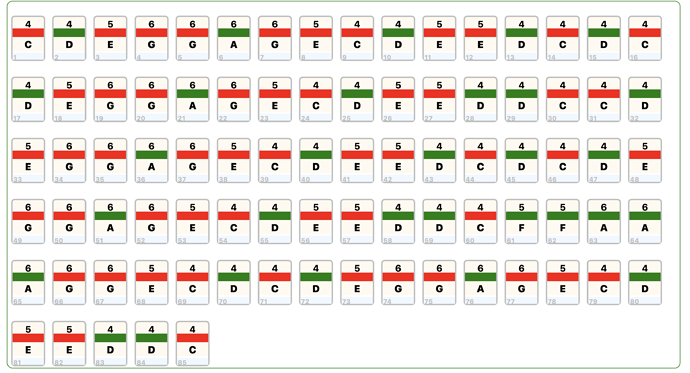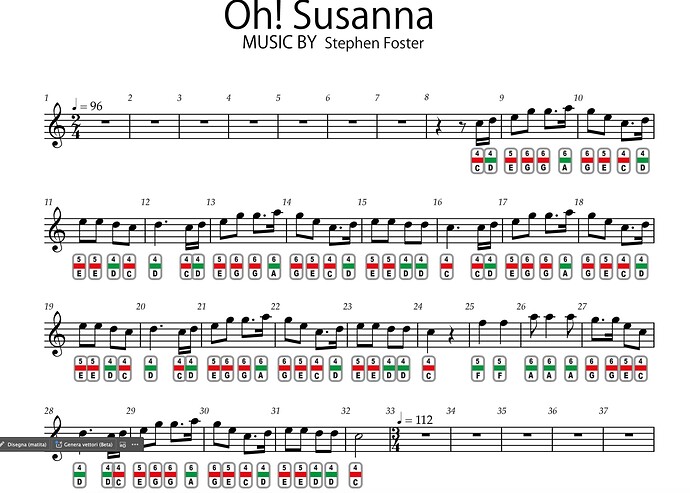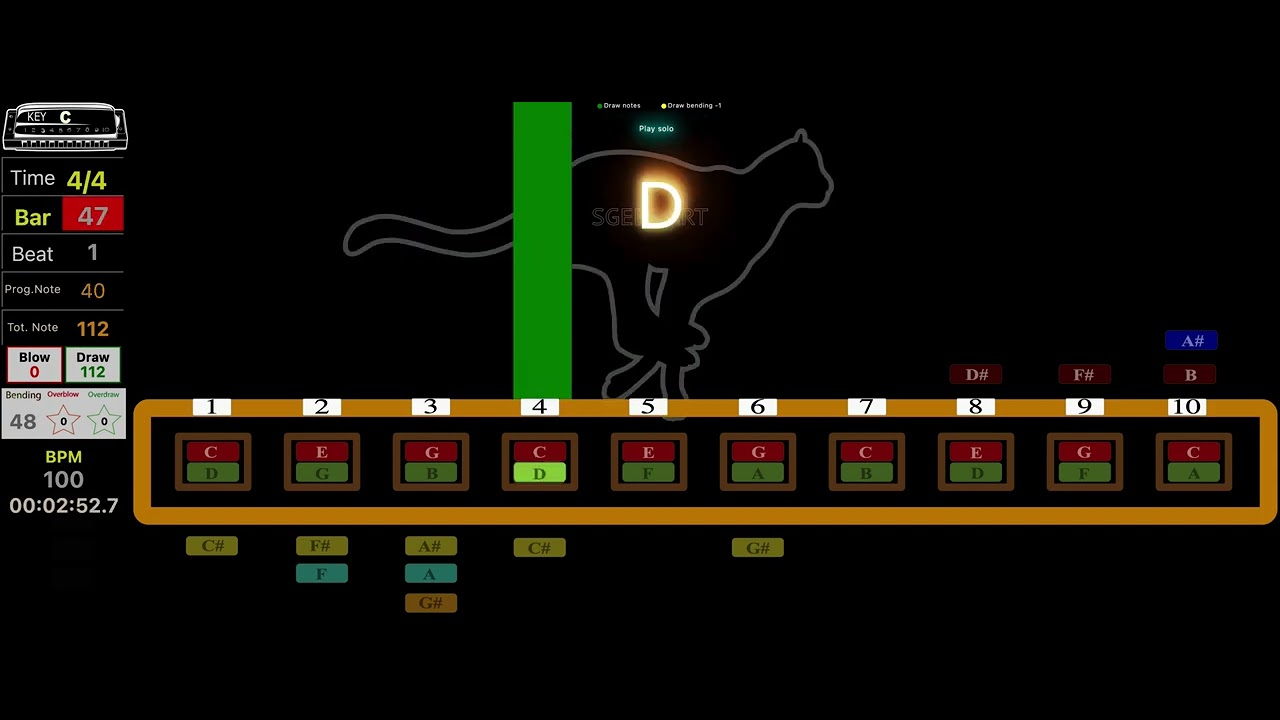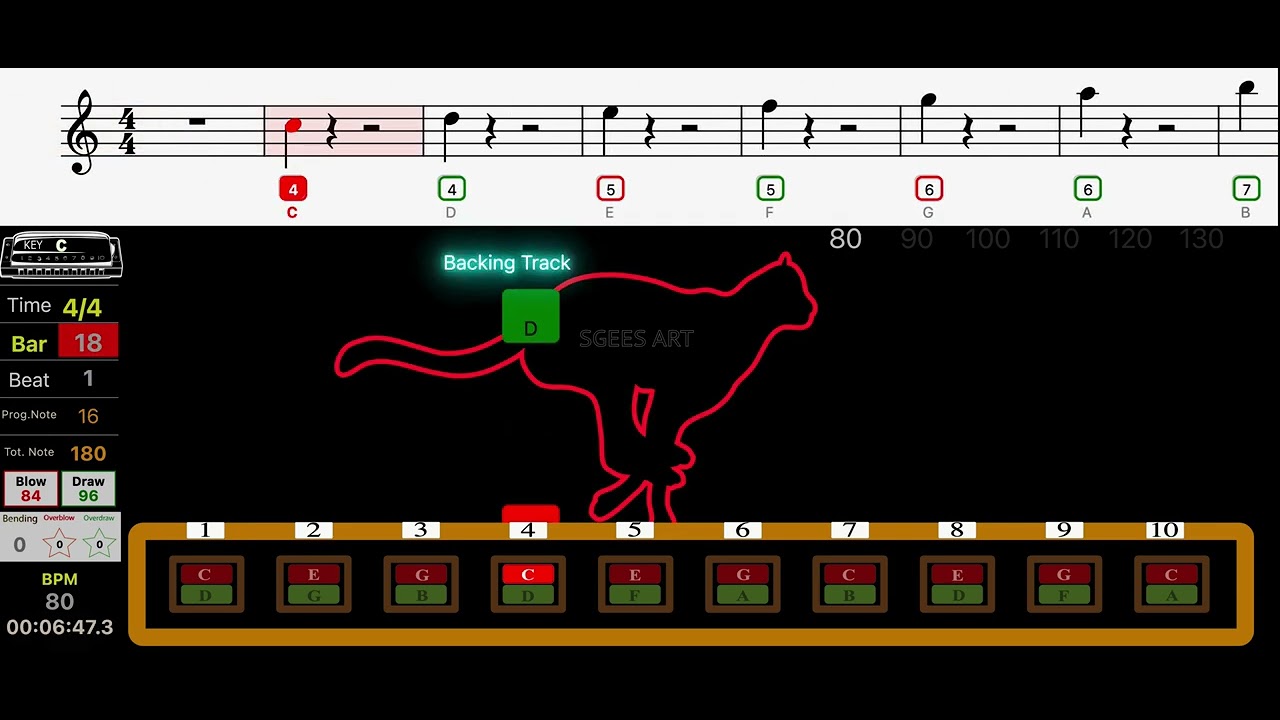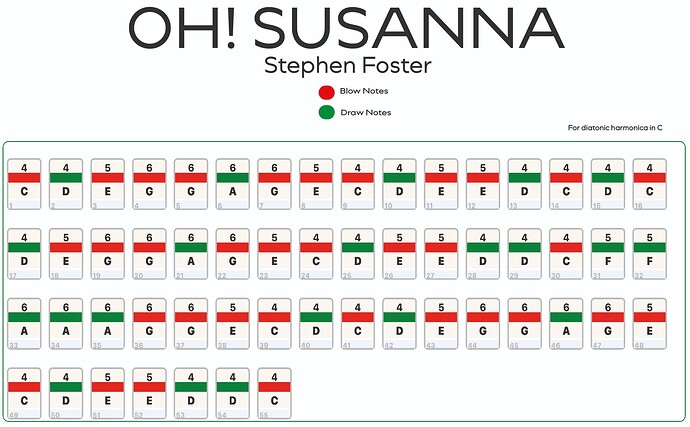Hi, this is really interesting.
Off the cuff, I see this as a fun “guitar hero for harmonica” thing to get people interested using a format they may be familiar with. There was a funny video about it: https://www.youtube.com/watch?v=2vBfzPfOq2I. There’s also similarity to the channel “Sheet Music Boss” which famously used a similar approach for Rush E: https://www.youtube.com/watch?v=Qskm9MTz2V4
From an instructional design standpoint, it is too much too fast. Good music education materials go extremely slow and slowly layer skills on top of each other. One of the primary reasons people invent new ways of teaching these kinds of things is impatience, boredom with fundamentals, and wishing it would go faster. And through the process of inventing their own system, they end up building those skills…that they would have built anyway with good instructional materials. A great example would be the Alfred piano books that kids use (the Adult version is too fast for most adults). There’s songs in there that use just two notes. Some very methodical thinking about how you move from one note to the next is likely the key to making something like this work.
From a learning science standpoint, you’ll often see the idea “we all learn differently” used as a reason for building instructional materials out differently for different groups of people. My recommendation is to avoid those justifications, because generally learning research doesn’t bear it out. Google “learning styles don’t exist” for a robust explanation, or click this link: https://www.youtube.com/watch?v=sIv9rz2NTUk
Instead, I’d recommend justifying the design based on it being interactive, accessible and fun. Those are better justifications from a factual perspective.
From a harmonica player standpoint, I do wonder if something like this would have made that initial period simpler. Maybe it would?
Music education has a peculiar aspect to it - if you go “fun forward” then you end up with students who won’t push through challenges, and will instead focus on the things that are fun and make them feel powerful. This is especially true for blues harmonica. I know one teacher who won’t teach students pentatonic scales until they’ve already learned major, minor, and modes. Interestingly, most method books outside of guitar do the same thing. The reason? Once you teach them that scale, the student will think, “cool, sounds good, guess I’ve learned everything I need to know!”
So I think if you were to press ahead with this (and you 1000% should!!), you’ll want to think through those kinds of things carefully so that you can build a progressive course of study that gets people from zero to 1 in a slow and methodical fashion.
I’m getting long-winded, so if you are interested to know more, send me a direct message. You can also reach me through my YouTube channel: www.youtube.com/@PeterHogie
![]()
